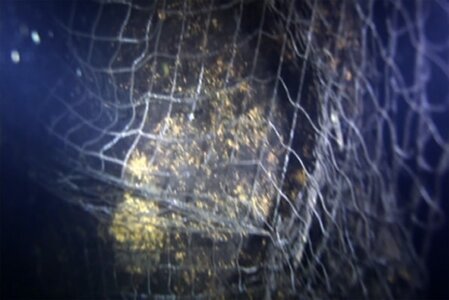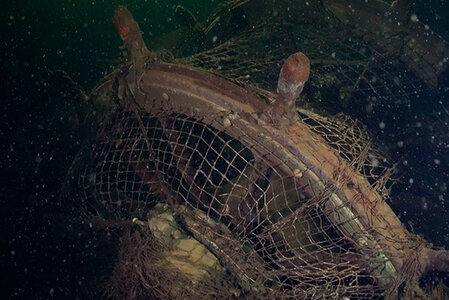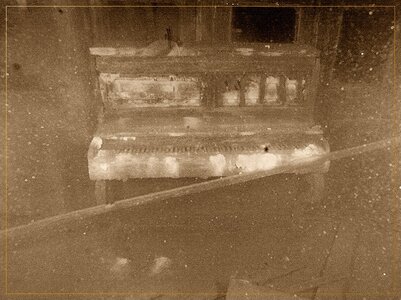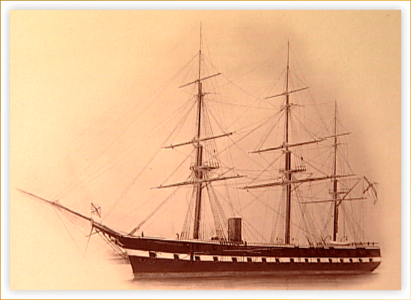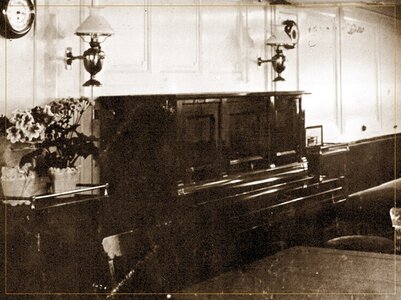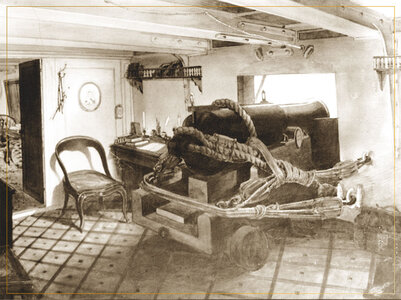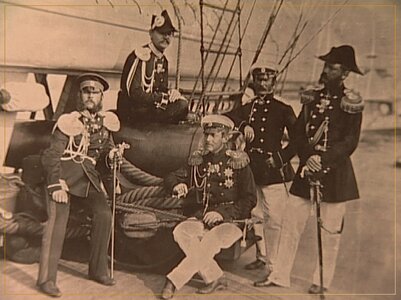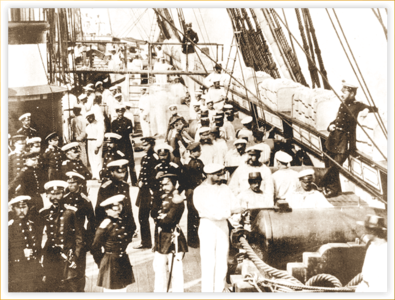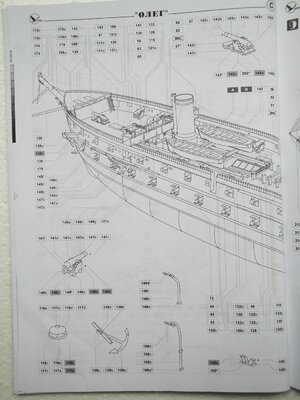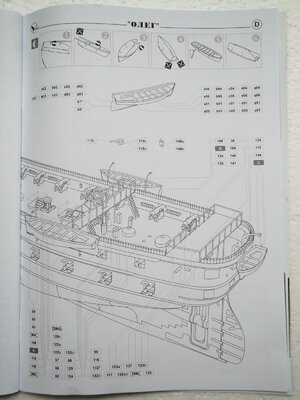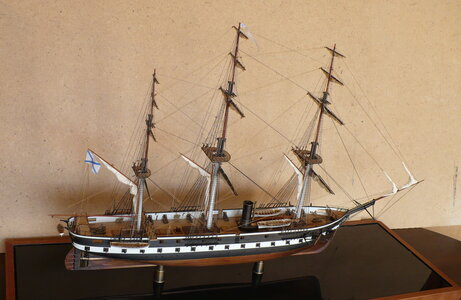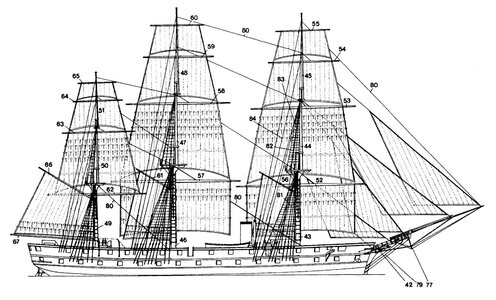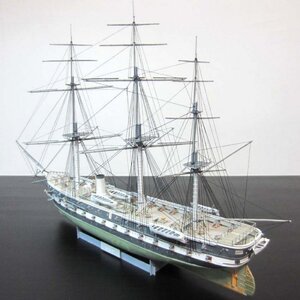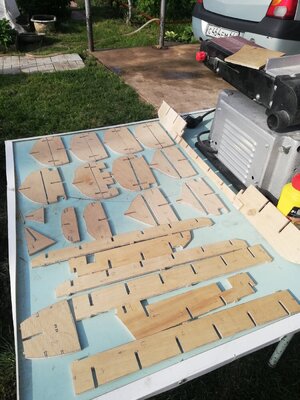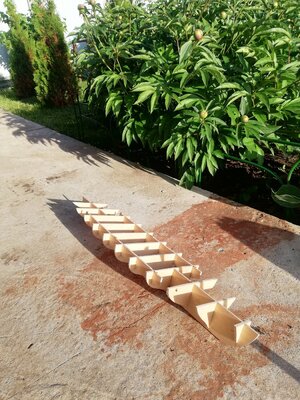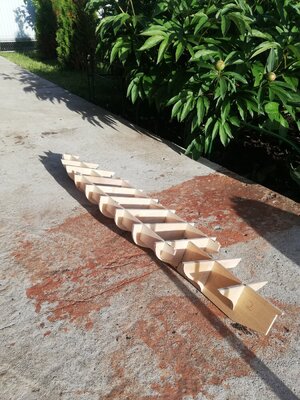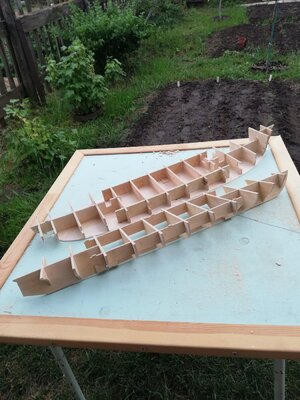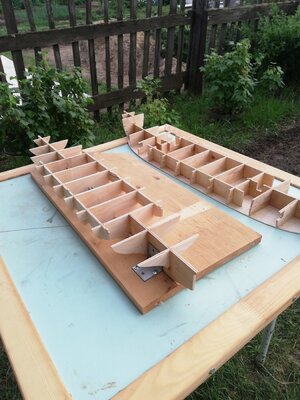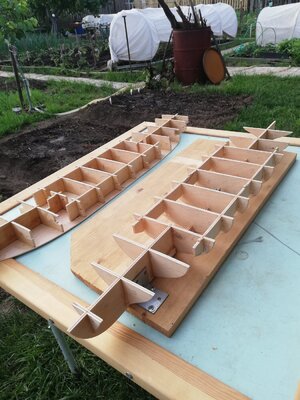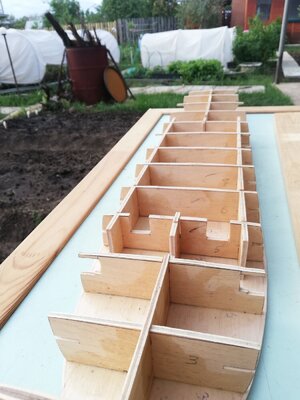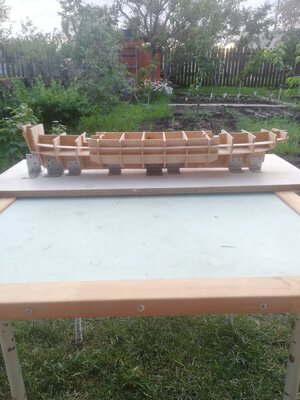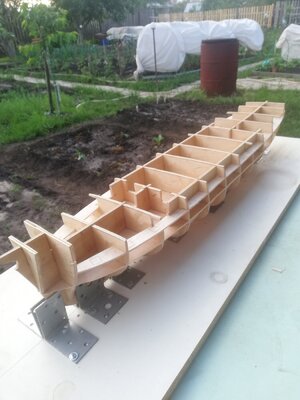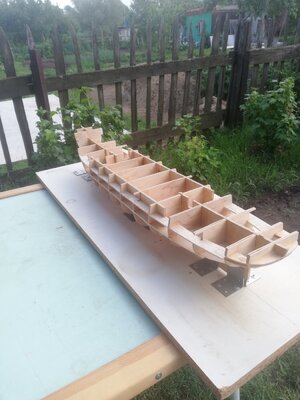Alas, this beautiful ship has a sad history.After a short service, the ship was wrecked.On Sunday evening, August 3 (15), 1869, in calm and clear weather, a squadron of armored vessels of the Russian Fleet performed exercises in formations and in realignments in the Gulf of Finland, between the islands of Gogland and Sommers.
The signal "change flanks by turning to the right" was raised on the squadron. When giving the signal for this maneuver, the armored squadron was in the front line in the following order: on the right flank of the screw corvette "Vityaz", next to it were: armored batteries "armored battery "Kremlin" and "Pervenets"; then came the wooden frigates "Oleg", "Peresvet" and armored frigate "Petropavlovsk". After the signal, all vessels turned to the right by 8 points, with the exception of the right-flank corvette Vityaz, which, based on the "evolutionary book", described a turn of 24 points; the other ships of the squadron turned behind him sequentially and entered his wake. During this movement, the armored battery "Kremlin", commanded by Captain 2nd rank Kornilov, which had failed and was in a hurry to take its place because of this, hit the frigate "Oleg" with its battering ram into the underwater part, almost in the very middle of the vessel, between the engine room and coal boxes, ahead of the mainmast; "Oleg" during the strike turned in the wake of his nearest ship, along the front, the battery "Pervenets". The frigate in the front line was located between the battery "Pervenets" and the frigate "Peresvet".
The frigate "Oleg", having received a hole, went to the bottom, within less than 15 minutes. Of the 546 crew members who were on the sunken frigate, 16 people died; the rest were rescued by the ships of the squadron.
Back in 2002, the specialists of the RGO CPI discovered a huge ship at a depth of more than 50 meters.
Underwater researchers were struck by the excellent condition of the frigate, despite spending a century and a half under water.
The entire hull was examined from the outside, and inside the divers went to the officers' lounge in the aft part.
Photo and video shooting made it possible to create preliminary 3D models of "Oleg",
and the raised artifacts have joined the collection of the Museum of the History of Kronstadt and other museums in Russia.
The ship is well preserved. The hull stands on an even keel with a slight roll to starboard at a depth of 56 meters.
The ship has no serious damage, except for:
All three masts fell to the right side. The mizzen and mainmasts lie with the lower end resting on the deck, the foremast is on the bottom along the side.
Utlegar, bom-utlegar, the bow figure and 4 anchors have fallen down and are lying on the bottom.
The metal casing of the stoker rusted and fell into the mine along with the pipe.
When the masts fall, the starboard bulwark is damaged.
Inside, some of the partitions between the rooms collapsed on the artillery and residential decks.
Vladimir Putin on the underwater vehicle "Sea Explorer-5" in July 2014 made a dive to the place in the Gulf of Finland, where the sunken ship was found.
The frigate "Oleg" is a particularly valuable historical monument. The case is able to withstand lifting for subsequent restoration.
